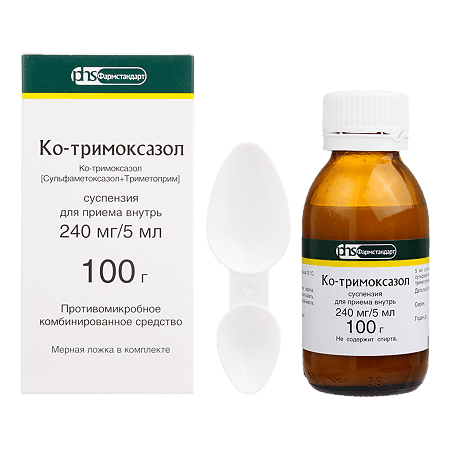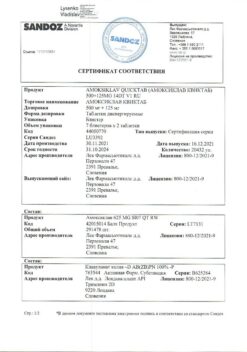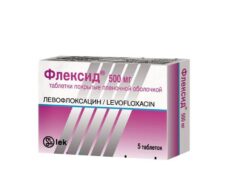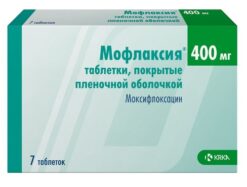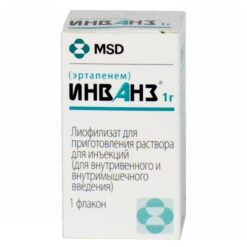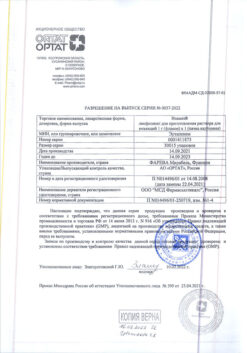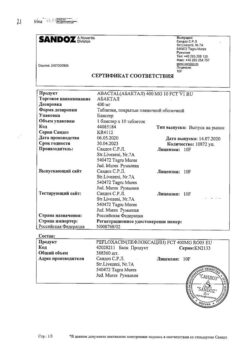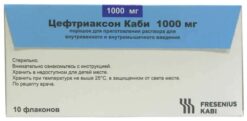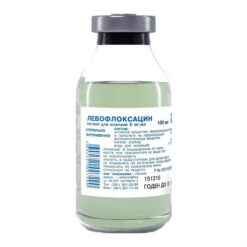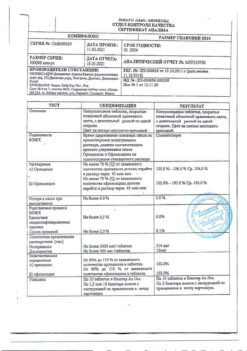No products in the cart.
Co-trimoxazole, 240 mg/5 ml suspension 100 g
€5.80 €4.87
Description
Pharmacotherapeutic group: antimicrobial combination medicine
ATX code: J01EE01
Pharmacodynamics:
Indications
Indications
– Infections of the genitourinary organs: urethritis cystitis pyelitis pyelonephritis prostatitis epididymitis gonorrhea chancroid venereal lymphogranuloma inguinal granuloma;
– respiratory tract infections: bronchitis (acute and chronic), bronchiectasis, lobar pneumonia, bronchopneumonia, pneumocystis pneumonia;
– infections of the ENT organs: otitis media, sinusitis, laryngitis, tonsillitis; scarlet fever; gastrointestinal tract infections: typhoid fever paratyphoid salmonella carriage cholera dysentery cholecystitis cholangitis gastroenteritis caused by enterotoxic strains of Escherichia coli;
– infections of the skin and soft tissues: acne, furunculosis, pyoderma, wound infections;
– osteomyelitis (acute and chronic) and other osteoarticular infections brucellosis (acute) South American blastomycosis malaria (Plasmodium falciparum) toxoplasmosis (as part of complex therapy).
Pharmacological effect
Pharmacological effect
Pharmacotherapeutic group: antimicrobial combination agent
ATX code: J01EE01
Pharmacodynamics:
Special instructions
Special instructions
If the course of treatment is extended for more than 5 days and/or the dose is increased, hematological monitoring is necessary; in case of changes in the blood picture, it is necessary to prescribe folic acid 5-10 mg per day.
With long-term (more than a month) courses of treatment, regular blood tests are necessary since there is a possibility of hematological changes (most often asymptomatic). These changes can be reversible with the administration of folic acid (3-6 mg/day), which does not significantly impair the antimicrobial activity of the drug. Particular caution should be exercised when treating elderly patients or patients with suspected underlying folate deficiency. The administration of folic acid is also advisable for long-term treatment in high doses. To prevent crystalluria, it is recommended to maintain a sufficient volume of urine excreted. The likelihood of toxic and allergic complications of sulfonamides increases significantly with a decrease in the filtration function of the kidneys. Excessive sun and UV exposure should be avoided.
Active ingredient
Active ingredient
Co-trimoxazole [Sulfamethoxazole, Trimethoprim]
Composition
Composition
100 ml of suspension contains:
Active substances:
sulfamethoxazole 4000 mg,
trimethoprim 800 mg.
Excipients: methyl parahydroxybenzoate (Nipagin), propyl parahydroxybenzoate (Nipazol), aspartame, acesulfame potassium (Sunette), sorbitol (Sorbitol), microcrystalline cellulose (Avicel), glycerol (glycerol), xanthan gum (xanthan gum), cherry flavor (Cherry flavor), charming red dye, water (purified water) – up to 100 ml.
Contraindications
Contraindications
Hypersensitivity (including to sulfonamides) liver and/or renal failure (creatinine clearance less than 15 ml/min) aplastic anemia B 12-deficiency anemia agranulocytosis leukopenia glucose-6-phosphate dehydrogenase deficiency pregnancy lactation period children’s age (up to 3 months) hyperbilirubinemia in children.
With caution:
Folic acid deficiency, bronchial asthma, thyroid disease.
Side Effects
Side Effects
From the nervous system: headache, dizziness; in some cases – aseptic meningitis, depression, apathy, tremor, peripheral neuritis.
From the respiratory system: bronchospasm, pulmonary infiltrates.
From the digestive system: nausea, vomiting, loss of appetite, diarrhea, gastritis, abdominal pain, glossitis, stomatitis, cholestasis, increased activity of liver transaminases, hepatitis, hepatonecrosis, pseudomembranous enterocolitis.
From the hematopoietic organs: leukopenia, neutropenia, thrombocytopenia, agranulocytosis, megaloblastic anemia.
From the urinary system: polyuria, interstitial nephritis, impaired renal function, crystalluria, hematuria, increased urea concentrations, hypercreatininemia, toxic nephropathy with oliguria and anuria.
From the musculoskeletal system: arthralgia, myalgia.
Allergic reactions: itching, photosensitivity, rash, exudative erythema multiforme (including Stevens-Johnson syndrome), toxic epidermal necrolysis (Lyell’s syndrome), exfoliative dermatitis, allergic myocarditis, increased body temperature, angioedema, scleral hyperemia.
Local reactions: thrombophlebitis (at the site of venipuncture), pain at the injection site. Other: hypoglycemia.
Interaction
Interaction
Increases the anticoagulant activity of indirect anticoagulants as well as the effect of hypoglycemic drugs and methotrexate.
Reduces the intensity of hepatic metabolism of phenytoin (extends its half-life by 39%) and warfarin, enhancing their effect
Reduces the reliability of oral contraception (inhibits intestinal microflora and reduces the enterohepatic circulation of hormonal compounds).
Rifampicin shortens the half-life of trimethoprim. Pyrimethamine in doses exceeding 25 mg/week increases the risk of developing megaloblastic anemia.
Diuretics (usually thiazides) increase the risk of thrombocytopenia. Reduce the effect of benzocaine procaine procainamide (and other drugs as a result of the hydrolysis of which para-aminobenzoic acid is formed). Between diuretics (furosemide thiazides, etc.) and oral hypoglycemic drugs (sulfonylurea derivatives), on the one hand, and antimicrobial sulfonamides, on the other, a cross-allergic reaction may develop.
Phenytoin barbiturates para-aminobenzoic acid increase the manifestations of folic acid deficiency.
Salicylic acid derivatives enhance the effect.
Ascorbic acid hexamethylenetetramine (and other drugs that acidify urine) increase the risk of developing crystalluria.
Cholestyramine reduces absorption so it should be taken 1 hour after or 4-6 hours before taking co-trimoxazole.
Medicines that inhibit bone marrow hematopoiesis increase the risk of myelosuppression.
Overdose
Overdose
Symptoms: nausea vomiting intestinal colic dizziness headache drowsiness depression fainting confusion visual impairment fever hematuria crystalluria; with prolonged overdose – thrombocytopenia, leukopenia, megaloblastic anemia, jaundice.
Treatment: gastric lavage, urine acidification increases the excretion of trimethoprim, fluid intake intramuscularly – 5-15 mg/day of calcium folinate (eliminates the effect of trimethoprim on the bone marrow) if necessary – hemodialysis.
Storage conditions
Storage conditions
Store at a temperature not exceeding 15 °C. Keep out of the reach of children.
Shelf life
Shelf life
2 years. After the expiration date, the drug should not be used.
Manufacturer
Manufacturer
Pharmstandard-Leksredstva, Russia
Additional information
| Shelf life | 2 years. The drug should not be used after the expiration date. |
|---|---|
| Conditions of storage | Store at a temperature not higher than 15 ° C. Keep out of reach of children. |
| Manufacturer | Pharmstandard-Leksredstva, Russia |
| Medication form | oral suspension |
| Brand | Pharmstandard-Leksredstva |
Related products
Buy Co-trimoxazole, 240 mg/5 ml suspension 100 g with delivery to USA, UK, Europe and over 120 other countries.

